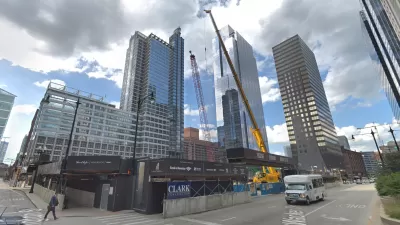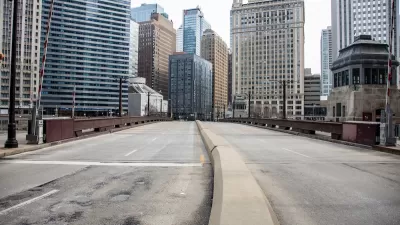Whet Moser looks at the revival of the intercity bus industry, despite its past inadequacies and stigmas. He discusses a new report that details the elements contributing to today's bus boom.
In this article, Moser first reminisces about his own past experiences, often negative, with intercity bus travel, before pointing to some surprising new findings regarding the turnaround in the industry. He presents the findings from a new report ‘The Motor Coach Metamorphosis" [PDF] published by DePaul’s Chaddick Institute for Metropolitan Development, that charts the decline and growth of intercity bus services. According to the report, "[i]ntercity bus service grew by 7.5% between the end of 2011 and 2012 -- the highest rate of growth in four years," outpacing growth in rail, airline and automobile intercity travel modes.
Moser cites two important phenomena contributing to this trend: 1) the opening of new bus services starting in 2006, including MegaBus and BoltBus, offering cheap fares and technological perks such as WiFi, which added much-needed competition to the otherwise stagnant bus industry; and 2) the revival of central-business districts throughout America's cities, which appeal to young travelers looking to avoid the hassle of travel to and from airports. The report also talks about how the incorporation of new technologies, streamlined location of new bus stops, and federal crackdowns on unsafe "Chinatown" buses are all contributing to growth in this industry.
Moser notes that nearly 50% of intercity bus users are within the ages of 18 and 25, that 5 out of six are traveling for fun or personal reasons, and that the majority are women. Finally, he speculates that another possible contributing factor to this trend is the abundance of time that many younger travelers may have prior to entering the workforce, before the "money-for-vacation-days trade" makes long bus journeys less attractive.
FULL STORY: Megabus, the Recovery of American Downtowns, and the Resurgence of the Bus Industry

Study: Maui’s Plan to Convert Vacation Rentals to Long-Term Housing Could Cause Nearly $1 Billion Economic Loss
The plan would reduce visitor accommodation by 25,% resulting in 1,900 jobs lost.

North Texas Transit Leaders Tout Benefits of TOD for Growing Region
At a summit focused on transit-oriented development, policymakers discussed how North Texas’ expanded light rail system can serve as a tool for economic growth.

Why Should We Subsidize Public Transportation?
Many public transit agencies face financial stress due to rising costs, declining fare revenue, and declining subsidies. Transit advocates must provide a strong business case for increasing public transit funding.

Alabama: Trump Terminates Settlements for Black Communities Harmed By Raw Sewage
Trump deemed the landmark civil rights agreement “illegal DEI and environmental justice policy.”

Dear Tesla Driver: “It’s not You, It’s Him.”
Amidst a booming bumper sticker industry, one writer offers solace to those asking, “Does this car make me look fascist?”

A Visual Celebration of Manhattan’s Chinatown Elder Community, Through Food
Lanterns, cafeteria trays, and community connection take center stage in this stunning photo essay.
Urban Design for Planners 1: Software Tools
This six-course series explores essential urban design concepts using open source software and equips planners with the tools they need to participate fully in the urban design process.
Planning for Universal Design
Learn the tools for implementing Universal Design in planning regulations.
City of Santa Clarita
Ascent Environmental
Institute for Housing and Urban Development Studies (IHS)
City of Grandview
Harvard GSD Executive Education
Toledo-Lucas County Plan Commissions
Salt Lake City
NYU Wagner Graduate School of Public Service




























